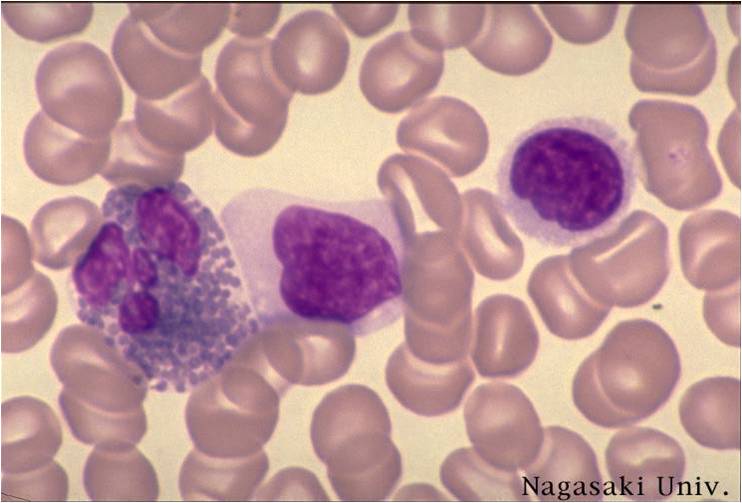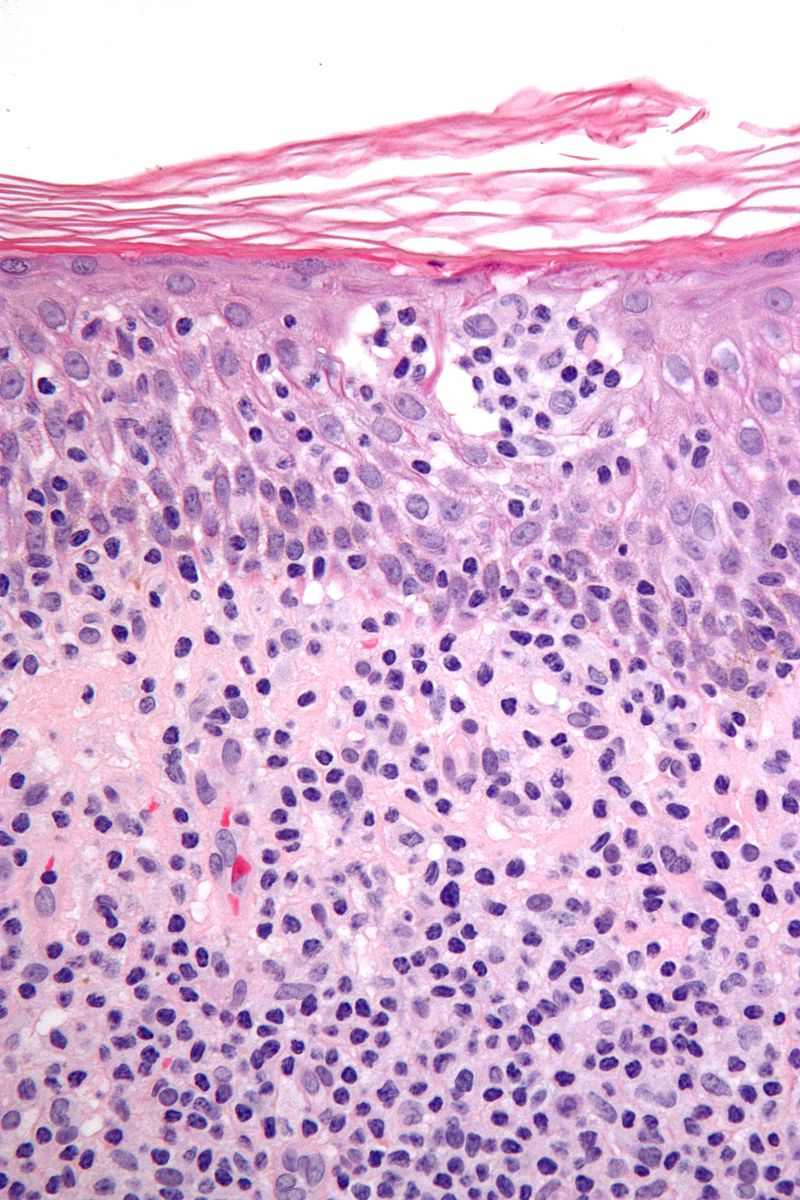Mycosis fungoides pathophysiology: Difference between revisions
Jump to navigation
Jump to search
No edit summary |
No edit summary |
||
| Line 19: | Line 19: | ||
:* Tumorous stage | :* Tumorous stage | ||
* The premycotic stage | * The premycotic stage | ||
:* Non-diagnostic and represented by chronic nonspecific dermatisis associated with psoriasiform changes in epidermis | :* Non-diagnostic and represented by chronic nonspecific [[dermatisis]] associated with psoriasiform changes in [[epidermis]] | ||
* The mycotic stage | * The mycotic stage | ||
:* Shows a polymorphous inflammatory infiltrate in the dermis that contains small numbers of frankly atypical lymphoid cells | :* Shows a [[polymorphous]] inflammatory infiltrate in the dermis that contains small numbers of frankly atypical [[lymphoid]] cells | ||
:* These cells may line up individually along the epidermal basal layer | :* These cells may line up individually along the epidermal basal layer | ||
:* The latter finding if unaccompanied by spongiosis is highly suggestive of mycosis fungoides | :* The latter finding if unaccompanied by [[spongiosis]] is highly suggestive of mycosis fungoides | ||
* Tumorous stage | * Tumorous stage | ||
:* Dense infiltrate of medium sized lymphocytes with cerebroid nuclei, expands the dermis | :* Dense infiltrate of medium sized [[lymphocytes]] with cerebroid nuclei, expands the [[dermis]] | ||
Revision as of 16:19, 21 January 2016
|
Cutaneous T cell lymphoma Microchapters |
Editor-In-Chief: C. Michael Gibson, M.S., M.D. [1]; Associate Editor(s)-in-Chief: Sowminya Arikapudi, M.B,B.S. [2]
Overview
Pathophysiology
- Cutaneous T cell lymphoma is an unusual expression of T-cells, a part of the immune system
- These T-cells are skin-associated, meaning that they biochemically and biologically are most related to the skin, in a dynamic manner
- Sezary syndrome and Mycosis Fungoides are T-cell lymphomas whose primary manifestation is in the skin
- Mycosis Fungoides is the most common type of 'Cutaneous T cell lymphoma' (CTCL)
- Mycosis fungoides is initially an indolent lymphoma but in its later stages can cause peripheral lymphadenopathy and can finally progress to widespread extracutaneous visceral / internal organ involvement
- "Sézary's cells" are T-cells that have pathological quantities of mucopolysaccharides
- Sézary's disease is sometimes considered a late stage of mycosis fungoides
Microscopic Pathology
- Mycosis fungoides has been divided into three stages:
- Premycotic stage
- Mycotic stage
- Tumorous stage
- The premycotic stage
- Non-diagnostic and represented by chronic nonspecific dermatisis associated with psoriasiform changes in epidermis
- The mycotic stage
- Shows a polymorphous inflammatory infiltrate in the dermis that contains small numbers of frankly atypical lymphoid cells
- These cells may line up individually along the epidermal basal layer
- The latter finding if unaccompanied by spongiosis is highly suggestive of mycosis fungoides
- Tumorous stage
- Dense infiltrate of medium sized lymphocytes with cerebroid nuclei, expands the dermis
-
Sézary's disease
-
Features: Nests of lymphocytes in the epidermis; "Pautrier microabscesses". Single lymphocytes in epidermis; "lymphocyte exocytosis". Short linear arrays of lymphocytes along the basal layer of the epidermis; "epidermotropism".

